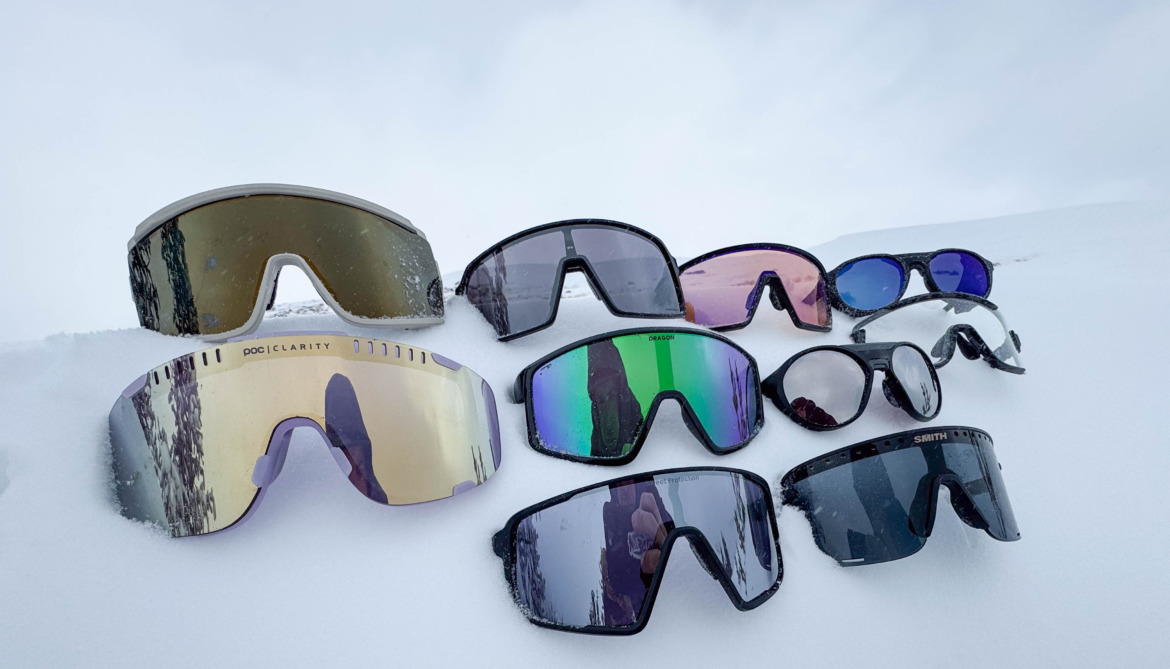
I truly needed goggles in the backcountry once last season. The wind was absolutely whipping, the light was perfectly flat, and I was downright nervous about the Gore Range couloir we were trying to find along a ridge of indistinguishable cornices. I put them on to calm my nerves and protect my face from an icy sandblasting while our team made some high-consequence decisions. Cool heads prevailed and we bailed.
But the rest of the time I wore sunglasses all the time. Big ski touring sunglasses are hot right now. They accomplish 90% of what goggles can in the backcountry without needing to be pulled on and off your face throughout the course of the day. Ski tourers know how precious those seconds are when it comes to transitioning faster than your partners.
The best ski touring sunglasses block reflected light from the sides and bottom, protect your eyeballs from blasting winds, enhance your vision in changing light conditions, and lock to your face while you’re surfing through the fluffy stuff. It’s not rocket science.
We’ve stuck our faces between every pair of big backcountry sunglasses that we can get our gloves on. There are about a billion options out there and the differentiators can be subtle. Pages of scribbled notes, gut feelings, and a pile of broken hinges transformed into the guide to the best ski touring sunglasses below.
What to Look for in Ski Touring Sunglasses
Here’s the thing – there’s a lot more subjectivity in picking a pair of shades than with ski touring boots or pants. So for this list we narrowed the field down by focusing on bigger, goggle-inspired sporty sunglasses that typically have a single lens rather than separate lenses for each eyeball.
Every pair of shades below is a solid ski touring companion, whereas some pairs we tested didn’t make the cut. There are of course objective distinguishing factors – durability, optical quality, and coverage/protection from direct and reflected light. Price also varies widely. Sussing out those qualities is what we aimed for here.
Aesthetics inevitably play a big role in any skier’s selection process. Glasses that make my medium-to-big face look like Cyclops are a no-go for me. But we’ll leave the aesthetic critiques up to you and the comments section. We just put our faces between each pair, share our insights, and let you decide what might work for you. Warning: there are unfortunately a lot of selfies below.
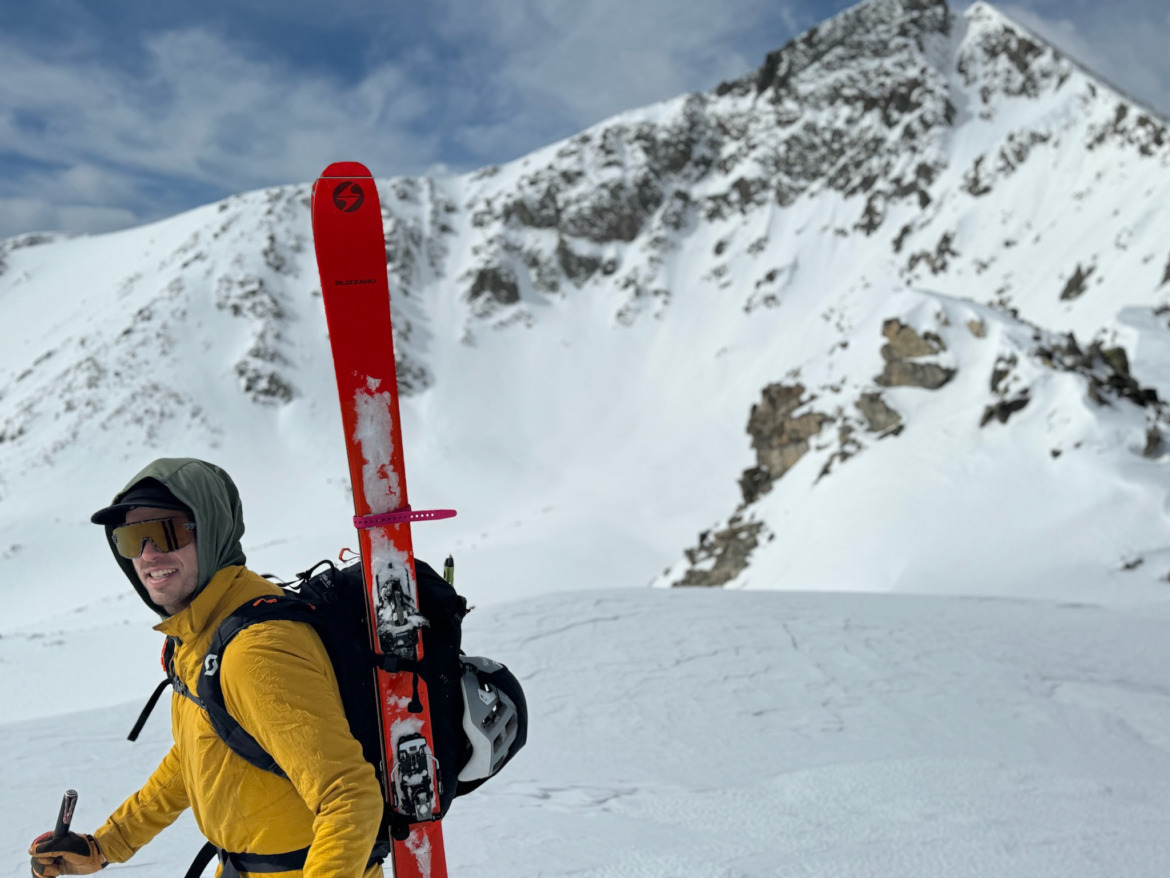
Coverage
Ski touring sunglasses have to protect your peripheries from light reflected off the snow. They aren’t going to beat ski goggles in this face-off, but big backcountry ski (or bike) sunglasses these days can do a pretty dang good job.
Glacier-style sunglasses are en vogue for their retro mountaineer aesthetic. They double down on coverage and at the very least sport side shields and often additional coverage on the eyebrow and nose to protect the wearer from harsh sunlight and albedo from snow and ice from below and the sides. Oakley’s Clifden and Smith’s Venture are new examples. Julbo’s Shield has been one of the most popular models among guides and mountain professionals for a decade.
It’s great when your eyes don’t get cooked on a glacier. I’m clearly not an optometrist but most skiers don’t see that level of coverage as critical for most of the winter. And that’s great because I can get about eight strides into a tour before any of my glacier shades completely fog up during the colder months of winter. Fogging is going to be a problem for most folks in glacier glasses, but we’ve added a few glacier-style shades into a condensed section at the bottom and instead focused on non-glacier-style glasses in the meat of the guide.
Lenses
I may be in the minority in this regard, but I don’t swap lenses very often even when I have the choice. I’m a set-it-and-forget-it ski touring sunglasses wearer. For that reason, I prefer lenses that can cover a wide variety of lighting conditions like the Sweet Bixbite. I’ll take a do-it-all lens over a pair of lenses that cover opposite ends of the spectrum anyday. The caveat is that a clear lens is obviously great for skiing at night if that’s in your ski touring rotation.
In my opinion, some companies justify a higher price tag by tossing in a clear lens that probably cost them dollars or cents to make. I like having a clear lens for night skiing for sure, especially for touring up the resort and ice climbing, but many skiers won’t need or want it. So “extra lens included” isn’t always worth it.
There’s a big spectrum of optical quality and color contrasting tech across all the different options. I consider Oakley’s Prizm lenses, Smith’s ChromaPop, and Sweet Protection’s RIG to be top notch. They add a little more contrast and enhance colors over what you’d see with your normal eye, which helps highlight the subtleties in snow conditions. That color and contrast tech is also pricey.
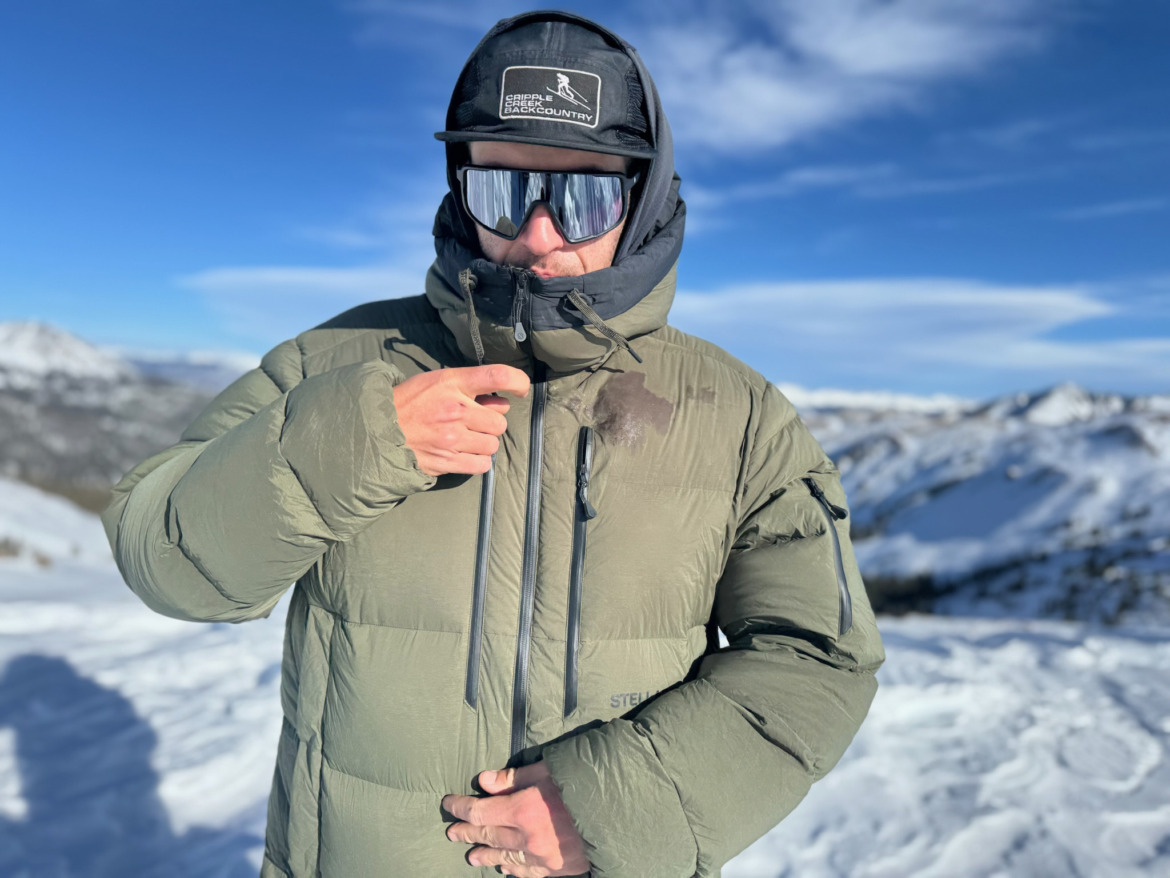
Fogging
Even the fanciest sunglasses can fog in cold ambient temperatures. While ski touring, glasses tend to fog when warm, moist air from the wearer’s face settles on the lens. If it freezes on there, it can be a pain to get it off. Big sunglasses can trap more of that warm air.
Good airflow is the key to mitigating the fog factor. A little wind or constant movement helps, but frame and lens shape play a big role in airflow. Glasses that sit closer to your face don’t allow as much air to move under the shield. The flip side is that glasses that sit farther from your face let in more light rays from the side, top, and bottom. Nailing that balance is tricky, especially because everyone’s face is differently shaped and runs at a different temperature. If your face doesn’t tend to get hot and sweaty, that’s great for you. Have fun with all your sunglasses options. I’ve called out the best options below for warm-faced folk like me.
Let me calm your nerves before you’re overcome by suspicion – none of the companies in this guide paid to get on this list. Wildsnow may earn a small commission from some link clicks. And I do mean small. The authors are not affiliated with, sponsored by, or compensated by any of these brands, though sunglasses were typically provided free of charge for testing purposes.
Top Ski Touring Sunglasses Picks from the Authors:
Bergen:
Sweet Protection Memento RIG. The Mementos strike a nice balance of good coverage without being gigantic, and they fit a lot of different face shapes. Plus the RIG lens is tough to beat in low and changing light conditions–as you’d expect from Scandinavian eyewear. They’re one of the cheaper options on this list, too. Read full review.
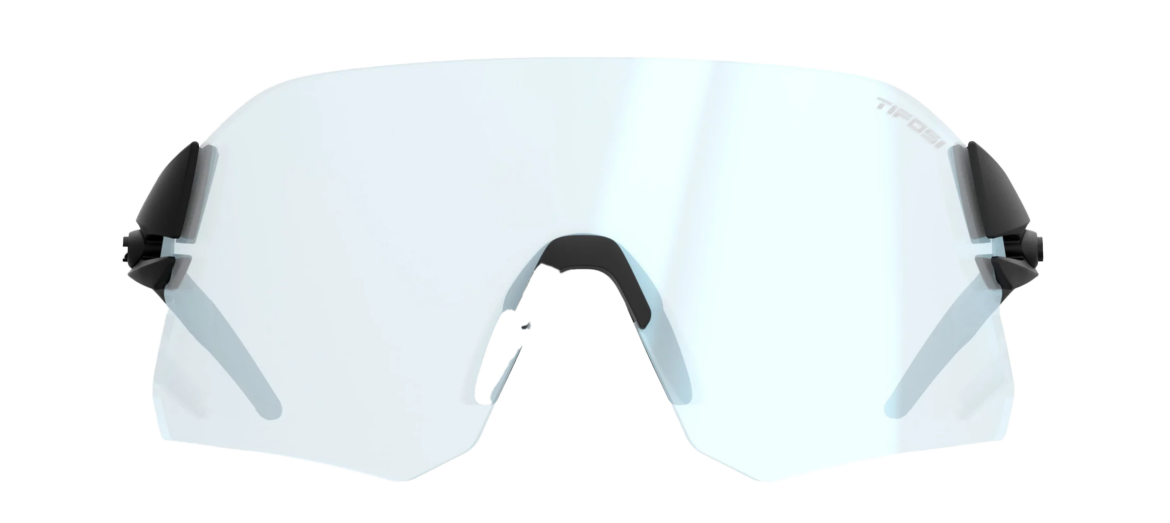
Justin Park:
Tifosi Rail Fototec. Tifosi’s photochromic Rail Fototec series sunglasses are cheap enough to get them as dedicated touring sunglasses (even though they’re sold as XC or cycling shades). They’re a tad undersized compared to some of the more goggly options, but they’re the best all-around pair I’ve found. The quick-shifting photochromic can be used from low-light morning starts through retina-destroying midday sun. Read full review.
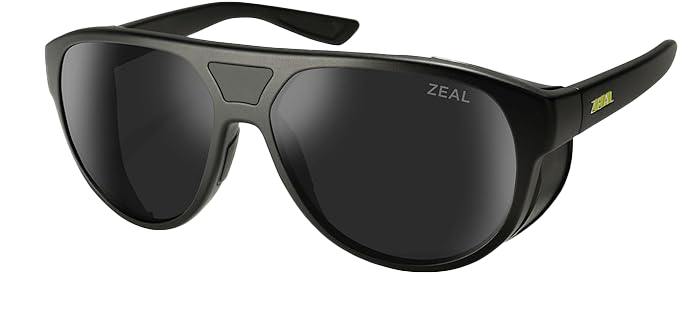
Steve Andrews:
Zeal Selkirk. These polarized, glacier-style sunglasses have a more modern look, quality optics, and the bio-resin frame is light and feels nice around the ears. One downside is the side shields feel somewhat cheap but the glasses are versatile enough to work well in both full sun and flat, overcast. Read full review.
Other Solid Ski Touring Sunglasses
(in order of coverage size, reasonable to gigantic)
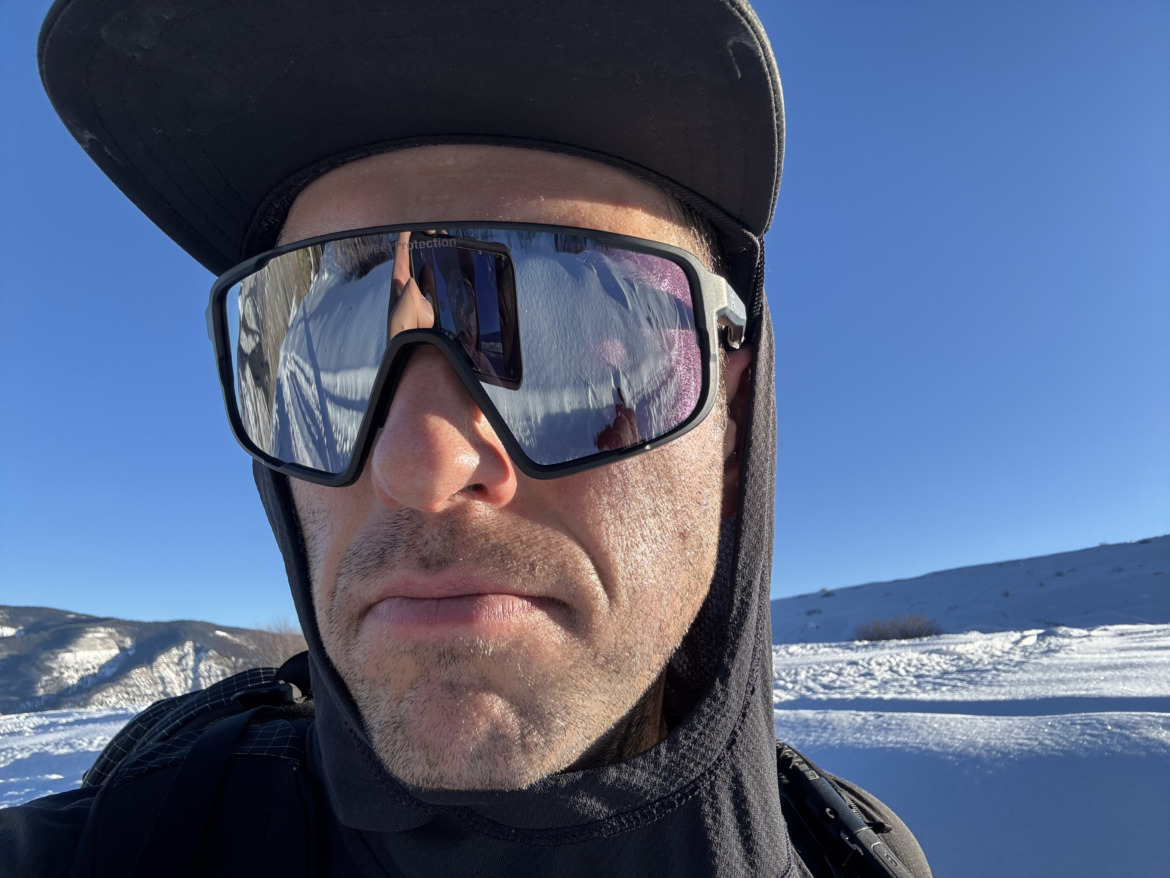
Sweet Memento RIG
Price: $130
Lens Type: Cylindrical
Color Enhancement: RIG Lens technology
Relative Frame Size: Medium/Large
Fit: Medium
Spare Lens: None
Lense Changing Ease: Not particularly easy
From the fjords of Norway come the Sweet Protection Memento Rig Sunglasses that have become my go-to for year-round use. These sunnies are excellent in a subtle way like some of my other favorite Scandinavian products. They aren’t huge like others on this list. They’re instead on the medium end of large in terms of face coverage.
The nose hole sets these shades apart from many others and makes them particularly appealing for ski touring. The nose cutout is uniquely deep, meaning the lens and bottom of the frame drop low over my cheeks to block a lot of the snow’s intense albedo. It’s the opposite of how Smith’s Wildcat fit me – those tend to sit higher on my nose. Combined with a cylindrical lens and shape, the Mementos offer a lot of coverage while providing sporty airflow.
Sweet’s RIG lenses are some of my favorites among goggles and sunglasses. The RIG Bixbite lens (VLT 25%) is my preferred lens for mixed lighting conditions when the sun is popping in and out of the clouds or gone entirely. I’m now running the Obsidian lens (VLT 4%) that is great in full sun conditions, but less versatile when the clouds roll in.
The Mementos aren’t the most durable on the list. I’m on my second pair after I snapped the arm off my first pair. Sweet’s warranty isn’t anything to write home about. That said, the RIG lens stood up well to a full spring season of ski touring and a summer of mountain biking and running before the frame failed.
At a cool $130, the Sweet Protection Memento RIGs are easily one of my favorites on this list for year-round use. They offer good coverage, great optics, and a sporty fit at a price point in line with reality.
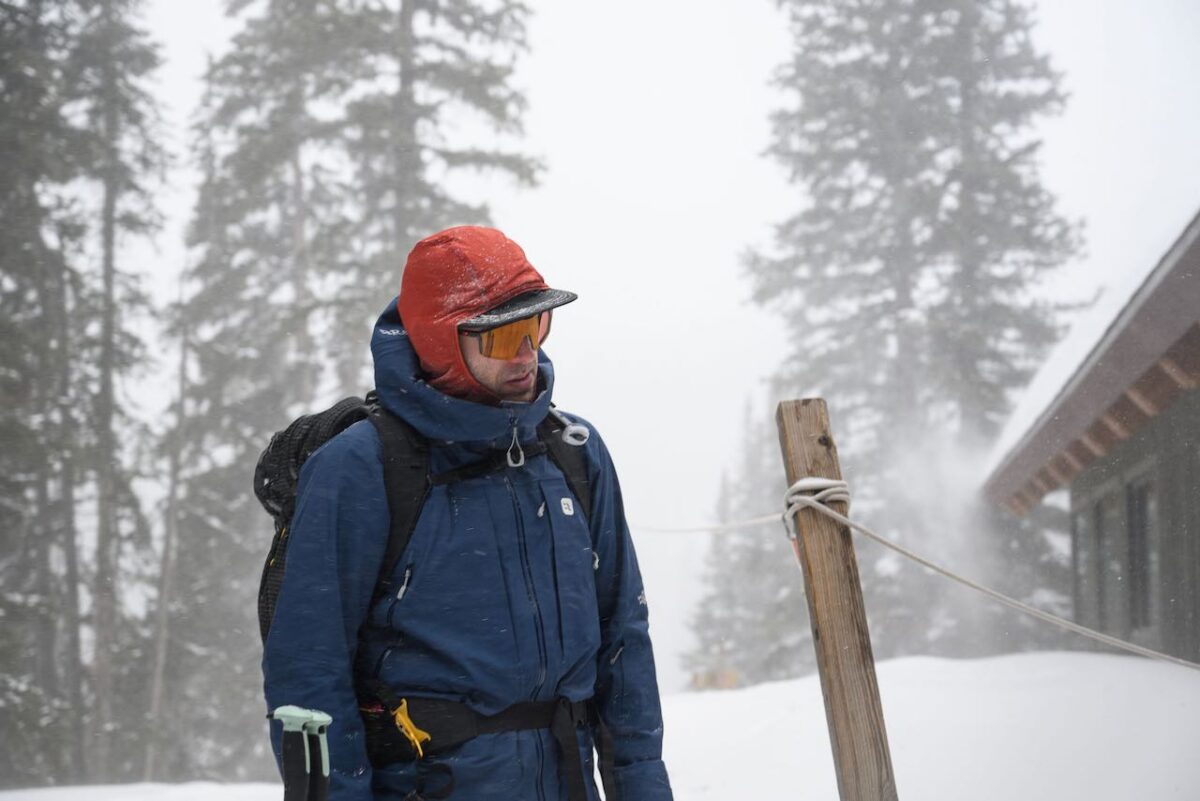
Photo: Blake Gordon
Julbo Edge
Price: $259
Lens Type: Cylindrical
Color Enhancement: None
Relative Frame Size: Large
Fit: Medium
Spare Lens: None
Lens Changing Ease: Easy
I hadn’t been sold on transition lenses until I tried Julbo’s Reactive technology in their new Edge sunglasses this season. But their Reactive 0-3 High Contrast lens is the real deal. This lens goes from almost clear (87% VLT) to protective on a sunny day (15% VLT). I could literally wear them from the start of a tour in the dark to the sunny afternoon without taking them off. I use these for night laps at the resort regularly. All the other transition lens skeptics out there should consider checking these shades out.
The rest of the Edge sunnies are solid, too. A large coverage castor bean based frame attaches the big lens, but it’s a more moderate athletic fit than you might think. They fit a variety of face sizes and shapes. Since technically they are mountain bike sunglasses, the peripheral coverage isn’t the most generous on this list – that might be their only downside for ski touring. They’re also available in the Edge Cover glacier configuration complete with side and nose shields.
I didn’t have any trouble with them sliding around or dropping down my nose even when I was working up a sweat. They fit and feel like superbly athletic sunglasses.
Though I didn’t end up using it because the Reactive covered the spectrum I needed it to, the Edge’s have a slick lens change system called MagneFix. The lens is interestingly only attached to the frame between the nose and the forehead with magnets, and it pops out of that slot without fuss.
The Julbo Edge with the Reactive lens is one of the most expensive sets of shades on this list at $259. Frankly this is the first transition lens I’ve used that warrants the high price tag. It’s better than the even more expensive Smith Pursuit, for example. It literally covers the full lighting spectrum that I encounter in Colorado in one lens rather than three. So there’s value in that package. The Edge’s are a dang good all-rounder for ski touring.
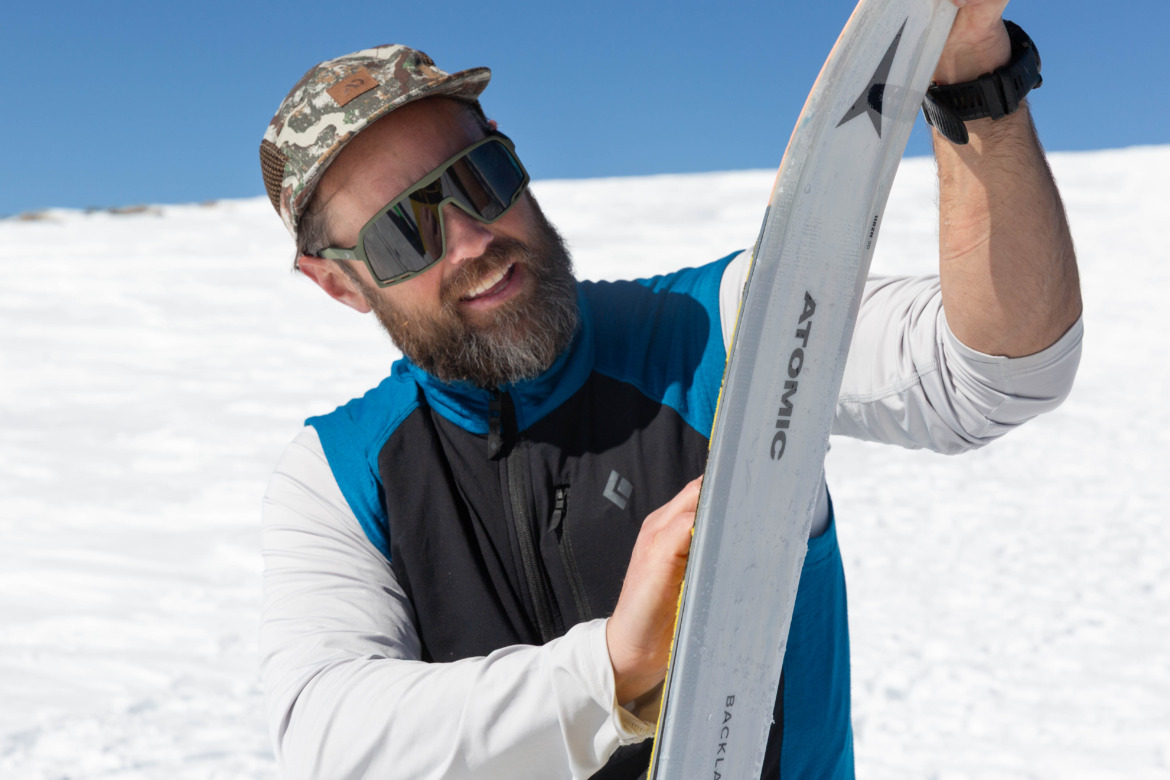
Knockaround Campeones
Price: $55
Lens Type: Cylindrical
Color Enhancement: None
Relative Frame Size: Medium
Fit: Medium
Spare Lens: None
Lens Changing Ease: N/A
There are so many awesome sport sunglasses these days, but unfortunately not many cost less than $100. (The Tifosi shades highlighted above are one of few exceptions.) When I lamented that I couldn’t find many cheaper options, a friend told me to check out Knockaround who have been making affordable sunglasses and goggles since 2005. I picked up a pair of the Campeones which are a middle of the road (in terms of frame and lens size) shield-style shade great for ski touring or mountain biking (and probably plenty of other sports I don’t participate in).
There’s not a ton of fancy lens tech or swapping mechanisms to talk about here, but for $55 you get a rock-solid pair of touring shades and you don’t have to weep or borrow money to replace them if you break them. Despite the price tag, there’s a year warranty if there’s something wrong with your pair. If you lose them or smash them to bits in your pack, that’s on you. Because the lens isn’t swappable, you’ll likely want a pair of clear shades as well. I’d suggest getting a second pair of Campeones in clear but they don’t make them, unfortunately. There are a ton of frame and lens options but they’re not polarized and are great for midday hours. I didn’t baby these and never broke the frames nor scratched the lenses over about 6 months of occasional touring and mountain biking which makes me feel like I already got my money’s worth. The coverage is just right and the frames sit far enough off your face to limit fogging even though you’re not paying for any fancy anti-fog features.
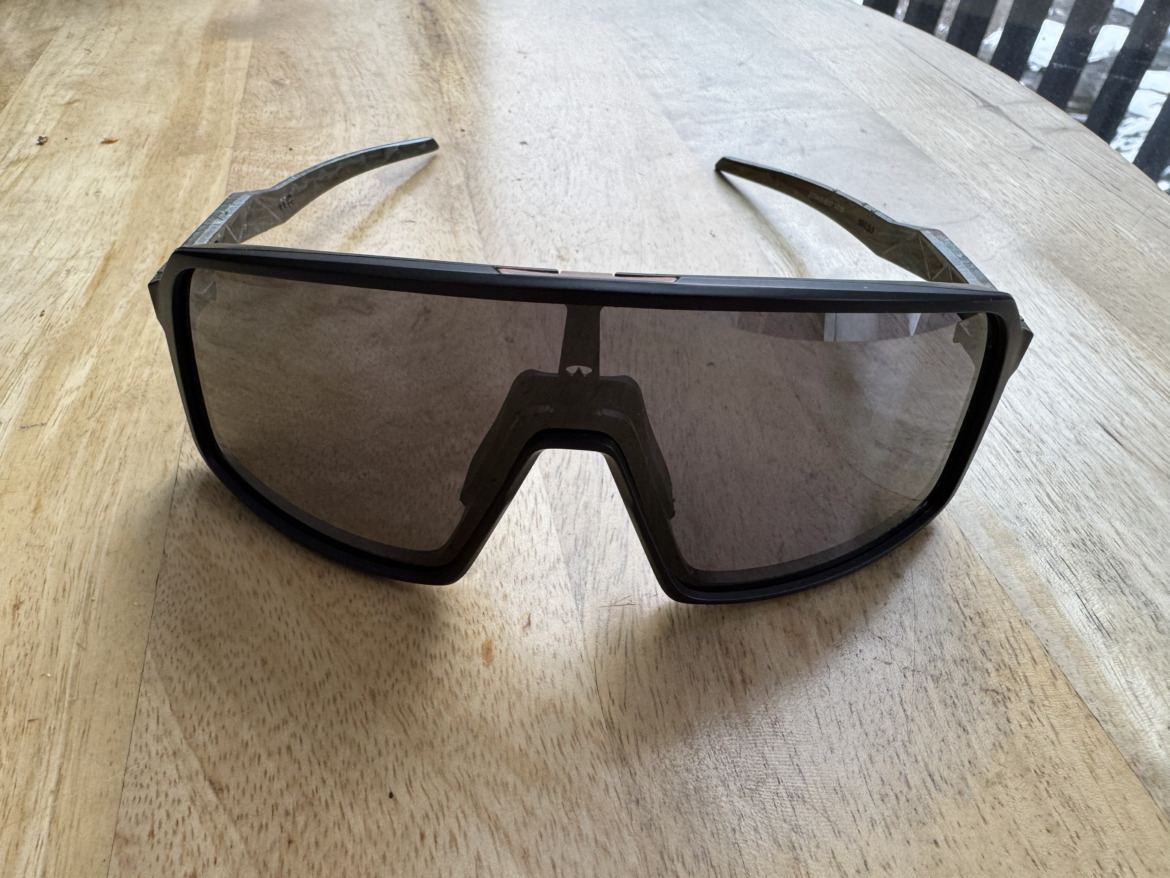
Oakley Sutro
Oakley Sutro
Price: $192
Lens Type: Cylindrical
Color Enhancement: Prizm
Relative Frame Size: Large
Fit: Medium/Large
Spare Lens: None
Lens Changing Ease: Not easy
Oakley’s Sutro checks a lot of boxes on any given ski tour. They’re protective without being gigantic, offer a wide field of vision, and they fit nice and tight to my face without sliding down the bridge of my nose. All that and they breathe pretty well too thanks to rubber nose pads that keep the lens away from your face.
Oakley’s Prizm lens technology is really top-notch. It changed the game when it came out around a decade ago. It noticeably enhances color and contrast without making the world look artificial. After testing many, many pairs of goggles and sunglasses over the last few years, Prizm has reliably been the benchmark for high-end color-enhancing optics.
I’ve broken the hinges off probably six different pairs of sunglasses over the last two years. The Sutro has not been one of them and my hunch is that’s because the hinges are burly and the arms are designed to pop out without breaking. That’s an Oakley thing. The frames have been super-reliable so far and the quality appears high as usual.
The only real downside to the Oakley Sutro that I’ve been able to sniff out other than being expensive for a single-lens rig is their reluctance to swap out that single lens. Traditionally that wouldn’t bother me because I’m a set-it-and-forget-it lens swapper. But folks who like to swap lenses often should look elsewhere.
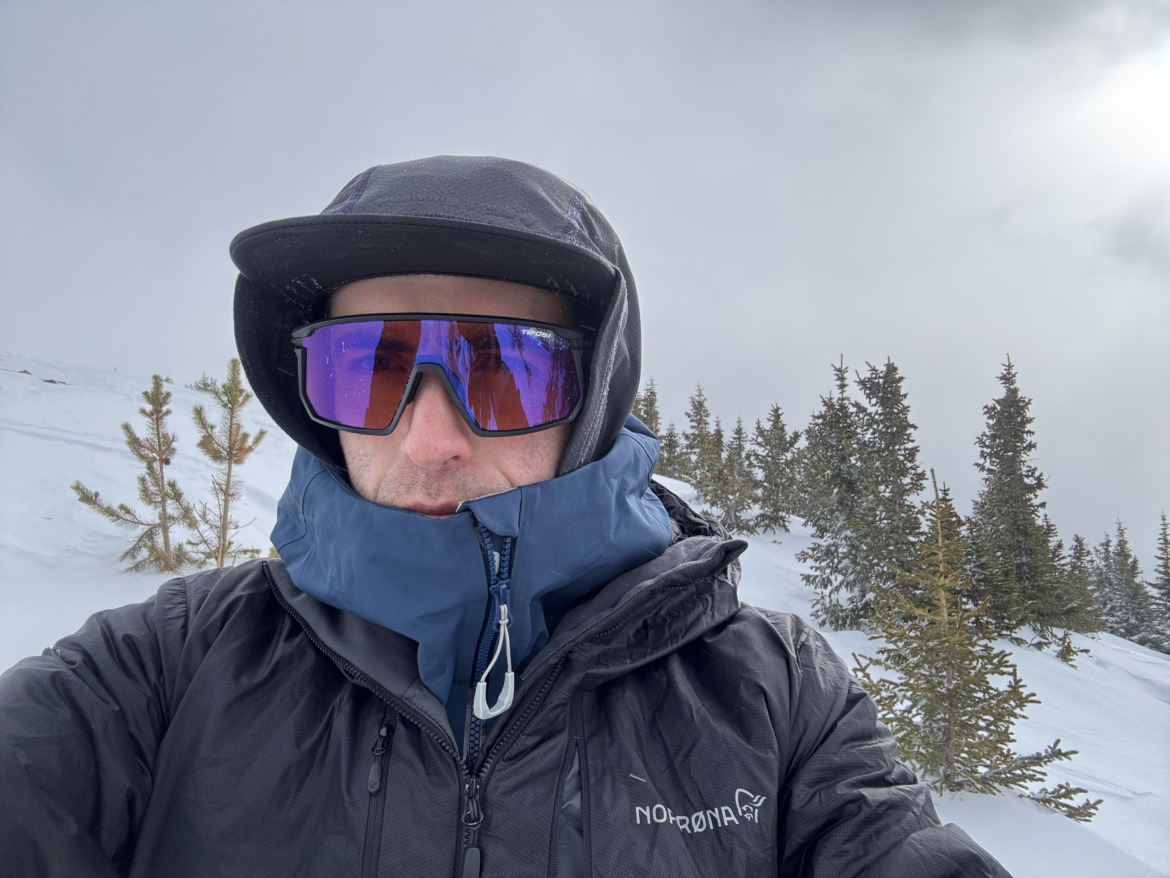
Tifosi Moab
Tifosi Moab
Price: $79.95
Lens Type: Polycarbonate cylindrical
Color Enhancement: None
Relative Frame Size: Medium/Large
Fit: Medium
Spare Lens: low light and clear
Lens Changing Ease: Not particularly easy
If you thought these affordable Italian shades were named for the bike-smashing singletracks around the booming desert oasis, think again. They match just as well with the skin tracks leading to Tukunukavitz.
I got along well with the Tifosi Moabs for several months of mountain biking before I finally dawned them in the snow. At the time, I thought they were good all around, but nothing special. So when I was trying to figure out where they’d fit into this guide, I checked their website for some specs and I gaped at the price tag – $79.95. They had me fooled. You could buy three of these for the price of one POC Devour.
The Moab sport a medium coverage, medium fit that should fit most faces. Adjustable nose pieces helped me dial in the fit very well – they ended up locking to my face like high-quality sport sunglasses should. The vented cylindrical lens provided solid optical quality, good ventilation, and maybe just a hair more glare than higher-end optics. But for that price? Stellar. Users who like to swap lenses often will be psyched to hear that the Moab’s come with two additional lenses for low light and no light conditions.
One caveat, though. I did snap the Grilamid frame of my first pair in half when I was trying to change the lens out. I wasn’t being delicate, but I wasn’t handling them like a grizzly bear, either. Fortunately, they have a solid warranty against defects.
If I was giving out ribbons, the Tifosi Moab would get the “Best Value” ribbon without a doubt. The other companies on this list are going to need to find new ways to add value or drop their prices when sunnies this good are flying around the backcountry.
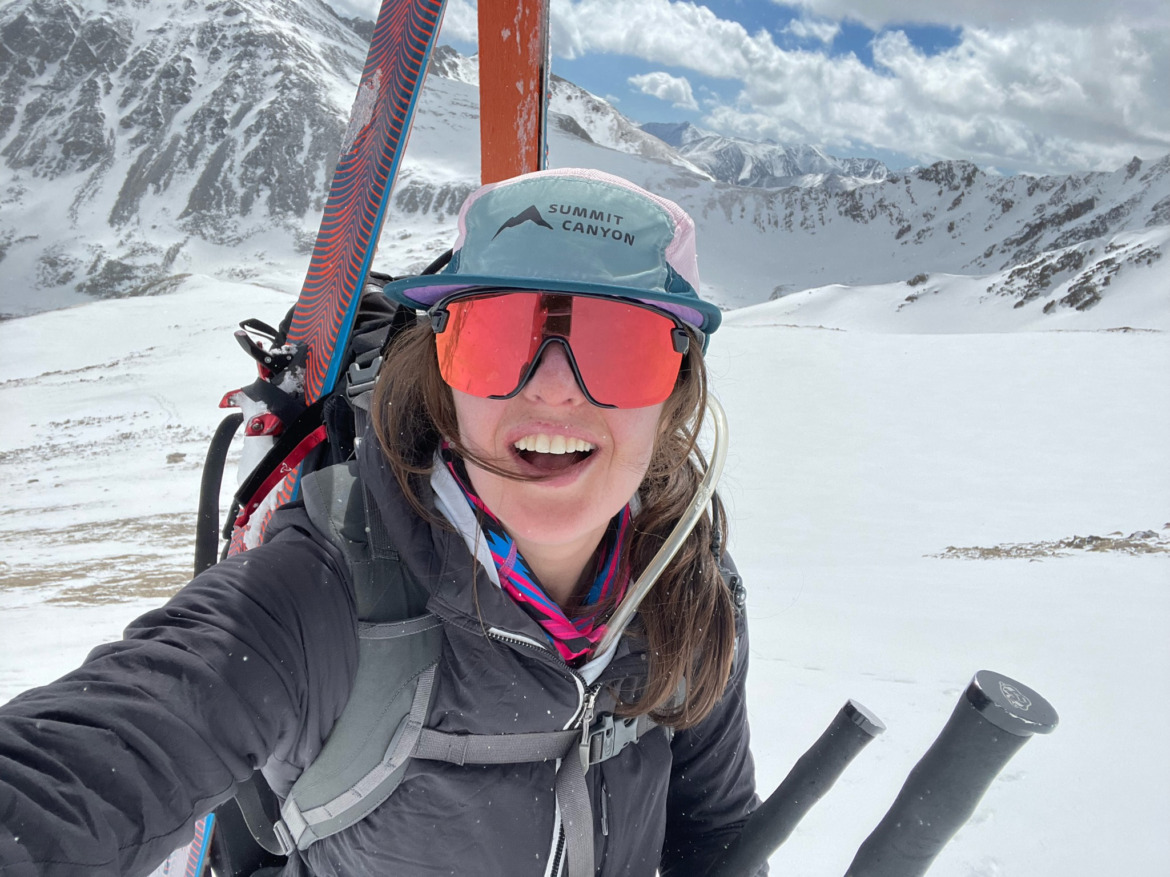
Smith Bobcat
Smith Wildcat & Smith Bobcat
Price: $225
Lens Type: Cylindrical
Color Enhancement: ChromaPop
Relative Frame Size: Medium/Large
Fit: Medium
Spare Lens: Clear
Lense Changing Ease: Moderately easy
The Wildcats in many ways kicked off the big sunglasses craze, yet these are a pair of windshields that we keep coming back to. Honestly, that’s partly because Smith has one of the best warranties in the business. I’ve snapped the arms off probably four pairs at this point and Smith has replaced them via warranty every single time within a week.
So clearly long-term durability isn’t their greatest asset. But they make up for it in solid coverage, an adjustable nose piece, and crisp ChromaPop color-enhancing optics that are genuinely solid. Airflow was good – the nose piece propped the frame up and slightly away from my sweaty face to keep fogging at a minimum.
The medium to large fit works with a good range of faces. They’re only moderately huge in terms of coverage at this point, but Smith also launched the Bobcat a few years back, which are similar to the Wildcat in all but shape, but designed around smaller faces.
The Wildcats and Bobcats come with an extra clear lens, which is moderately easy to swap in and out of the frames. The ChromaPop Red Mirror Lens has been my go-to for ski touring during sunny and partly sunny days. 15% VLT gives them good versatility over the course of a changing day. I wasn’t a fan of the more expensive ChromaPop Photochromic Clear To Gray that both models offer – I found that they got too dark in cold, low light conditions. I stuck with the Red Mirror lens as the set-it-and-forget-it option.
One thing that continues to annoy me about the Wildcats is that the ends of the arms scratch the inside of the lens when they’re folded up. Yeah, you can put them in a hard case or slip a piece of cloth between the inside of the lens and the arms, but really I should be able to toss these into a sunglasses sleeve and stuff them into my backpack or pocket without them slowly destroying themselves.
I really leaned into the critiques in this one, but the Wildcats and Bobcats overall are great pairs of shades and they’re tough not to recommend. They do everything pretty dang well and the coverage is just right for ski touring. The Wildcats in particular are a pair I keep pulling out of the sunglass pile.
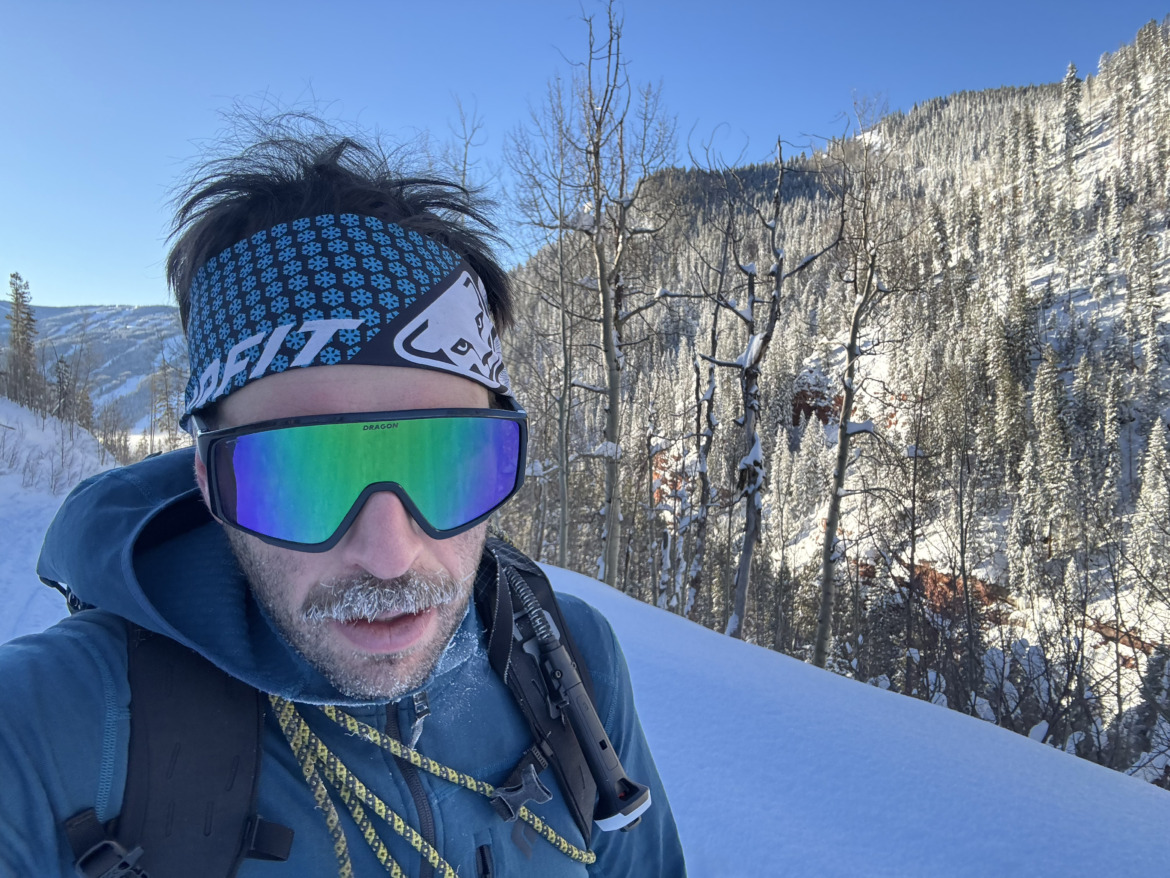
Dragon Amped
Price: $150
Lens Type: Cylindrical 4-base polycarbonate lens
Color Enhancement: Lumalens Color Optimized lens
Relative Frame Size: Large
Fit: Medium
Spare Lens: None
Lens Changing Ease: Not particularly easy
Dragon Alliance has been late to the big sunglasses game but they’ve made up for it with their new Amped shades. They’re big, bold, and a little bit retro. And they get some enviro points for being made of plant-based resin.
While they definitely aim to strike a balance between sporty and stylish, I found that they’re a solid ski touring companion in terms of fit. The arms held the shades onto my face tightly so they didn’t bounce around. But unlike many sport-first shades, they don’t have adjustable rubber nose pads to help dial in the fit – it’s just nose on frame. It wasn’t uncomfortable at all, but they weren’t quite as locked to my nose as the Oakley Sutro for instance. No nose pads also meant my sweaty eyebrows pressed against the top of the lens from time to time causing lens smear.
For such big shades, I didn’t have any problem with fogging. That’s partly because the cylindrical lens is more of a windshield than a wraparound. The flip side is that they aren’t the best on this list for blocking reflected sun from the sides. Your eyeballs would get cooked on a glacier in the summer.
I notice just a slight amount of color distortion in the vertical peripheries of the Lumalens. That didn’t really impact me while ski touring, but it’s worth noting nonetheless. So the optics aren’t quite as crisp as some of the other shades on this list like the Sweet Memento or the Oakley Sutro, but they’re still high quality.
Despite a few nitpicks, the Dragon Amped made this list because they’re good big shades at a good price. Others on this list offer better coverage, more adjustable fit, and better optics, but the Amped strike a nice balance of those characteristics with an honest price tag.

Smith Ultralite
Price: $175
Lens Type: ChromaPop Black Lens
Color Enhancement: Chromapop
Relative Frame Size: Large
Fit: Medium/Large
Spare Lens: None
Lens Changing Ease: Not particularly easy
I was drawn to the Ultralites for ski touring based on the wide, wraparound coverage and the vented lens. But honestly, it’s that Smith warranty that keeps me coming back to try new styles.
The Ultralights are big on retro ski goggle styling, but they retain the performance-oriented features of the Wildcats including a rubber but non-adjustable nosepiece and ChromaPop color-enhancing lens. They ditched the extra clear lens and associated price tag, bringing the Ultralights down to $175, which is unfortunately a bargain given how expensive sunglasses are these days.
The Cylindrical lens provides a lot of coverage. I guess since I can’t stop comparing them to the Wildcats, the Ultralites offer more wraparound coverage deep into the periphery. In addition to blocking reflected rays, they also managed to stop whipping winds from blasting my contact lenses into brittle flakes.
I didn’t experience any out-of-the-ordinary issues with fogging despite the wraparound coverage. And to be honest I’m not sure that the vented lens made a significant difference over a non-vented lens. That would take laboratory-like conditions to suss out. I can’t imagine those little cutouts hurt, though.
Regardless, the Ultralites‘ formula works. They offer a full coverage frame, excellent ChromaPop optics, and a stellar warranty at a cheaper price than the Wildcats.
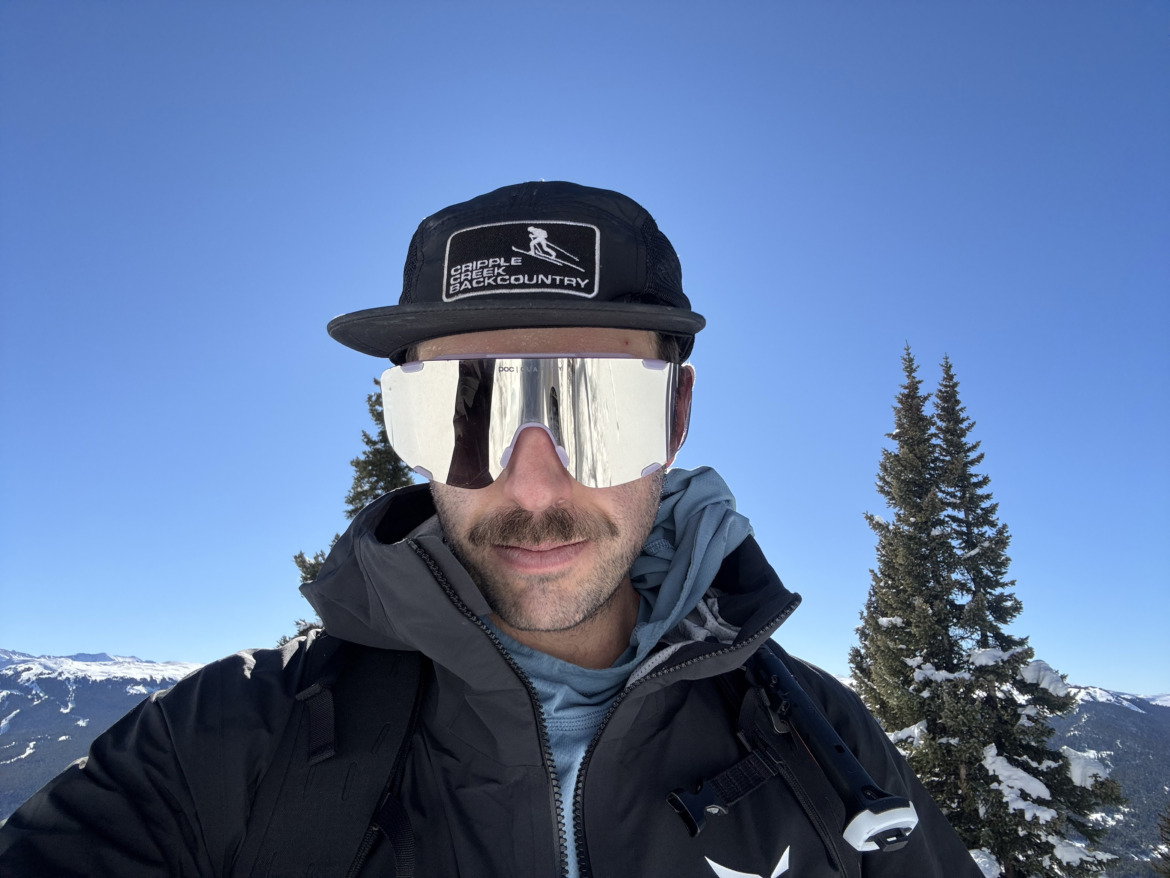
POC Devour shades covering a lot of real estate.
POC Devour
Price: $250
Lens Type: Cylindrical. Made by Zeiss
Color Enhancement: Clarity Lens Technology
Relative Frame Size: Extra Large
Fit: Large
Spare Lens: Clear
Lens Changing Ease: Easy
The Devours are downright huge in terms of coverage and they have a relatively large face fit to match. POC walked right up to the “too big” line without crossing it. While ski touring they blocked the rays and the wind from almost all directions. But for such a huge shield, the POC Devour actually breathed pretty well and fended off fog decently thanks to a heavily vented frame design that lets in plenty of airflow.
The lens extends far to each side for wraparound windshield-like coverage. Between those two layers of large, these POCs won’t work for everyone, especially folks with smaller faces. But those who match with the fit will be treated to a near-goggle experience that very few shades match.
Though the Devours only come with one tinted lens, it’s top quality. I’ve been a fan of POC’s lenses (made by Zeiss) over the last few years. They tend to do really well in low light conditions as if they were designed in Sweden (they were). The Partly Sunny Cat 2 lens was an excellent set-it-and-forget-it option that I skied with extensively. The Cat 3 was protective in bright conditions, but also provided enough light transmission when the clouds rolled in unexpectedly.
Adjustable length arms allow you to go from extra large to about medium/large, but even with a medium/large sized head, I wanted them tighter on my face. I found myself pushing them up on my nose often, which of course got annoying.
For glacier glasses diehards, the POC Devours (aimed at mountain bikers) also come in a glacier version with side shields and some additional protection around the frame, which I have not tested.
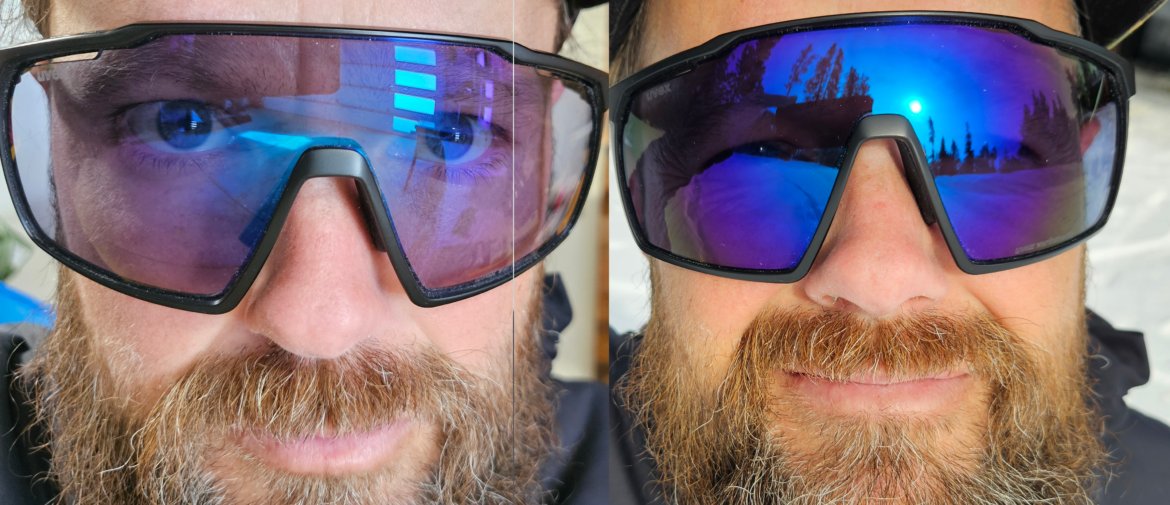
uvex mtn perform V sunglasses indoors (left) and in full sun outdoors (right)
uvex mtn perform V
Price: $190
Lens Type: Spherical. Photochromic.
Color Enhancement: None.
Relative Frame Size: Medium-Large.
Fit: Medium-Large
Spare Lens: N/A
Lens Changing Ease: N/A
These oversized sport shades are the anti-Pit Vipers. Instead of leaning hard into neon-and-mohawks 90s nostalgia, the mtn perform V are all German engineering and functionality. I like the understated aesthetic. They sport a non-interchangeable photochromic lens and when they’re dark they’re kinda cool blue mirror, when they shift to smoky clear, they look like safety glasses.
And go figure, uvex makes plenty of safety glasses and these, while polycarbonate sport shades, are up to the same standards. I started wearing them for running power tools and they’ve supplanted my crappy Lowes clear specs and so I have to remember to grab them off the workbench for biking or ski tours.
On the snow, they cover a lot of ground with their Variomatic lens which changes slowly to the ambient light levels. (uvex estimates the lens takes 25 seconds to adjust fully.) This is a positive thing for the most part since I’ve used some photochromic sunglasses and goggles that adjust too quickly which can be jarring for your eyes and make it harder to adapt to shifting conditions. The downside is if you’re flying downhill from full sun to dark forest, your eyes have to handle most of the immediate adjusting.
They’re nearly $200, so I wish they came with a hard case, but they’ve survived 6 months of at least weekly use by a known destroyer of sunglasses. That $190 also gets you pretty amazing anti-fog, a feature often touted, but these are truly difficult to fog up. If there’s a downside to the mtn perform V, it’s that they skew a little dark which can leave you straining to see in those first or last hours.
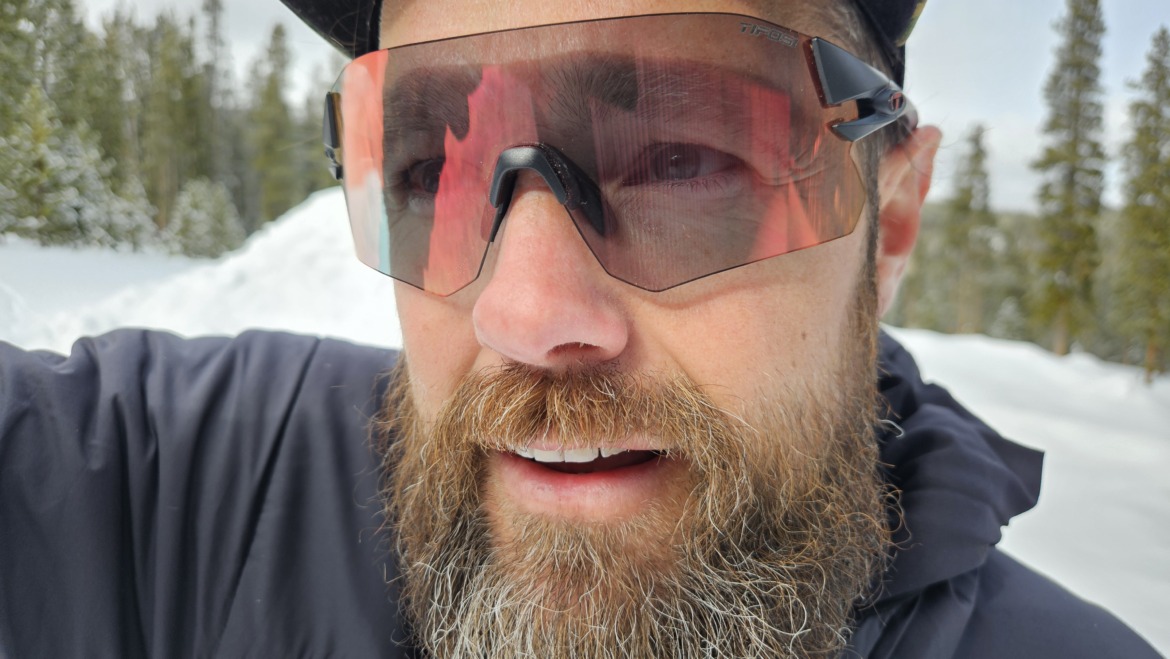
The Tifosi Rail Fototec sunglasses err on the lighter side. Pictured here outside on a fairly sunny day.
Tifosi Rail Fototec
Price: $79.95
Lens Type: Cylindrical. Photochromic.
Color Enhancement: None.
Relative Frame Size: Medium-Small.
Fit: Medium-Large
Spare Lens: N/A
Lens Changing Ease: N/A
Review by Justin Park
Photochromic lenses sound like they ought to make changing lenses obsolete. They darken when the sun gets brighter or lighten to nearly clear in low-light conditions. The reality is they don’t cover all conditions and are at their best in rapidly shifting partly cloudy days where swapping lenses can’t happen fast enough.
Where most photochromic lenses fall short is ultra-low-light conditions where you’re struggling to see even without shades on. No matter how light they go, photochromics still don’t get completely clear. The Tifosi Rail Fototec max out at 64% VLT, while truly clear lenses approach 100% VLT, so that low end is where most will still want clear ski touring shades.
But as someone who’s usually too lazy to swap lenses in the field, I’ve found the Tifosi Rail Fototec sunglasses cover almost every condition and, despite being marketed for baseball and cycling and costing less than $100, they adapt as quickly as any of the other half-dozen or so photochromic shades I’ve tested skiing. Some find quick-shifting lenses jarring but it’s helpful when you blast in or out of trees on the descent. Even in full sun, the 14% VLT blocks enough light for me by shifting from nearly clear to a smoky red mirrored lens.
The change is drastic enough I once had a touring partner ask me if I had changed sunglasses when we moved from shaded forest to full sun on a skin. Compared to other photochromics, the Tifosi lens skews lighter. I’ve compared them side-by-side with other photochromic ski touring sunglasses and the Rail Fototec lens stays lighter in all light levels. It’s hard to quantify how light but they appear clearer to the eye behind them as well as from the outside in terms of how transparent they look. This is huge if, like me, you often find sunglasses too dark and either have to remove them or swap lenses.
The price is surprisingly low for such a capable pair of touring sunglasses but that’s kind of Tifosi’s thing. There are limitations, of course. Lenses aren’t interchangeable, they don’t offer the massive wind- and snow-blocking real estate of other options, and there’s no fancy anti-fog nor contrast- or color-enhancing tech. But the build is light (32g) and the rimless design means there’s minimal blockage of your field of vision from a frame. Mine have endured a year of use without scratching or breakage, but I have to imagine the rimless build is more fragile. There’s also no special anti-fog tech, but the airflow (thanks mostly to an adjustable nose guard) is good enough that it’s rarely been an issue for me on the skintrack.
Glacier Glasses for Ski Touring
There are so many great glacier glasses hitting the market this year that we had to give them a nod and a few initial thoughts.

Zeal Selkirk
Review by Steve Andrews
Pros: Available as a prescription. Great image quality + contrast, oversize frames
Cons: Lenses aren’t interchangeable. Might be too big for smaller faces. Brow piece can get lost easily
Zeal’s Selkirk felt like the only glacier glasses I tested that would look good around town. Generally, glacier glasses have a specific need and design that lends itself well to alpine snow and ice, but down in the valley it’s a bit overkill when a good set of shades will do just fine. The Selkirks have a rare combination of performance and style, bringing a 21st-century take on glacier glasses.
Thanks to the removable side shields you can still have protection while out in the mountains, but you’re able to take that as well as a bridge piece for the nose away when you just want them for aprés. It would have been nice if they had a dedicated stash pocket for those pieces, though, because they are easy to lose if they aren’t used all the time.
The bio resin material is actually more than a feel-good sustainability gimmick. It felt smooth on the face and had a level of comfort that regular plastic didn’t have. It has a soft matte feel that is most welcome compared to hard plastic on the face, especially in the cold. These glasses are well-designed, and offer a larger protective area than smaller glacier glasses while still rocking a more modern look.
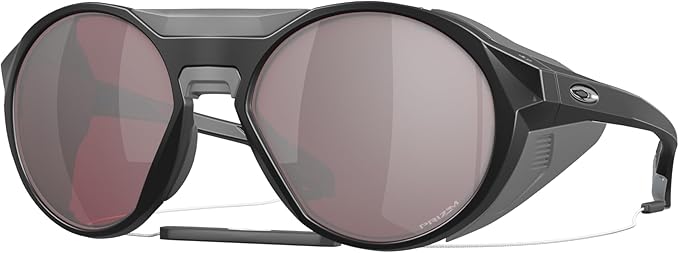
Oakley Clifden
Oakley Clifden
Oakley’s new Clifden are not only the closest fitting glacier shades on the list, they’re also a throwback to a golden window of mountaineering. I wouldn’t be surprised to see these exact shades on Conrad Anker’s face twenty years ago high on Himalayan peak in Jimmy Chin’s There and Back: Photographs from the Edge. Despite blocking all airflow and fogging heartily on my sweaty face, the Oakley Prizm lens is tough not to fall in love with at lower heart rates. The field of vision is on the small side for skiing, though.
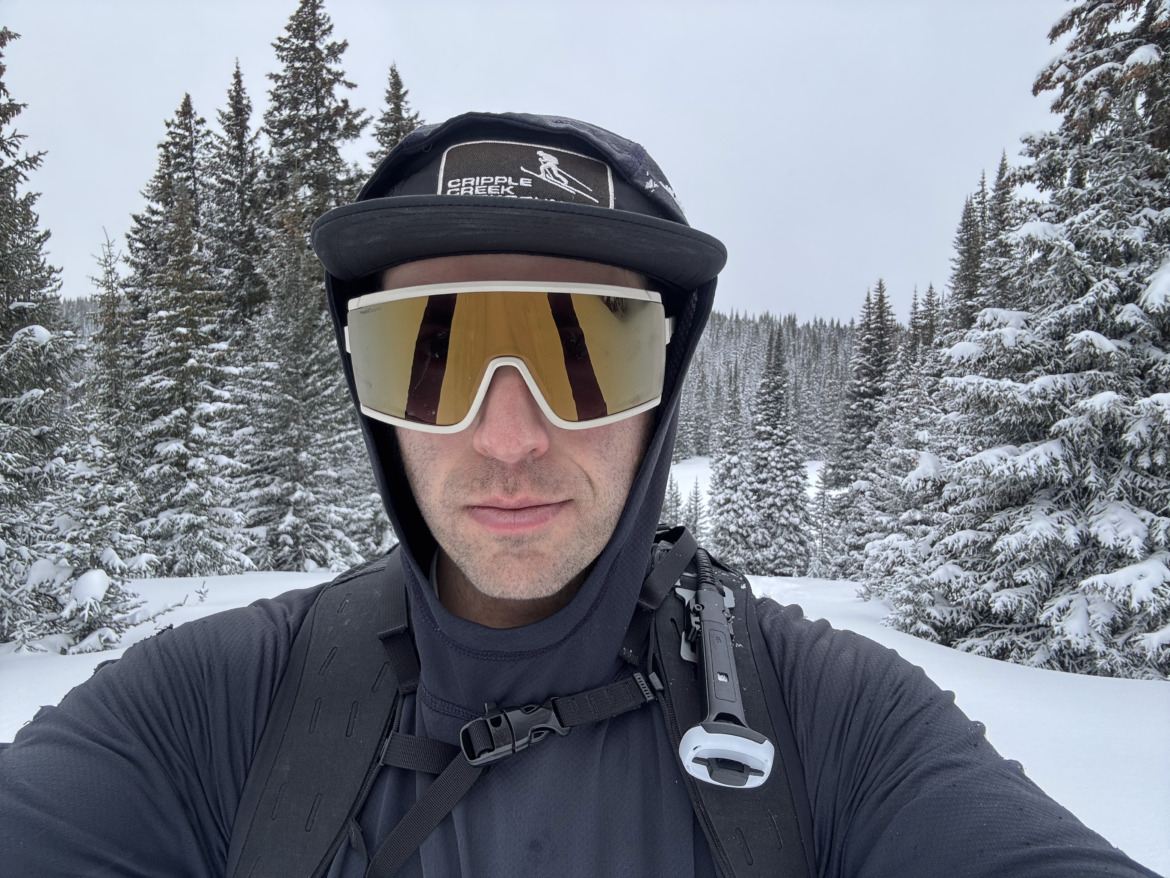
Smith Pursuit ski touring sunglasses
Smith Pursuit
I’ll be honest, the Smith Pursuits are not my favorite glasses on this list for day-to-day ski touring. Yes, I know Cody Townsend wears them from dawn till dusk all year. Here’s what I like about them: The Pursuits offer massive coverage from reflected light and they’re easily the glacier glasses with the biggest field of vision on this list. The detachable nose cover is a great feature – it protected my nose during a few scorchers on Mt. Rainier last summer. The side shields do what side shields do. And the small, packable carrying case is by far the best I’ve come across. I wish I could buy five of them a-la-carte. Oh, and of course the ChromaPop optics are stellar.
But here’s the rub. The Pursuits fogged up quickly with side shields installed much like other glacier-style glasses that prevent cooling airflow. They’re removable though, so that’s an easy one to solve. Smith’s photochromic lenses work great for bright conditions, but they tend to get very dark in low light and cloudy conditions, which is exactly when you’d want them to let in more light. That’s not an issue with the Pursuit per se, since you can get the Pursuit with a standard (and excellent) ChromaPop lens instead. My last critique is that the arms of the Pursuits scratch the inside of the lens when they’re folded up. So a fresh lens in a $305 pair of sunglasses scratchy and smudgy quickly. Okay, one last jab – the fit is big so they slid down my face often. But of course, fit is subjective. They do come with a strap to lock them to your head, though, which can help solve that issue for folks with small- and medium-sized faces.
That all said, skiers who spend a lot of time on glaciers or skiing in the spring and summer months will be hard-pressed to find a pair of high-coverage shades with such a big field of view. Most of my qualms can be solved without too much hassle. But for $305 I think I should have fewer qualms.
Smith Venture/Embark
Smith’s Venture and Embark Glasses are similar to each other in most ways aside from frame shape, hence the grouping here. Both styles offer superb protection from reflected sunlight and wind. While I haven’t been able to tour in either one for very long mid-winter because of the fog factor, one of my least sweaty touring partners wears them year-round and looks good doing it.
I generally like the fit of each of these shades, but I’d love for them to incorporate adjustable nose pieces instead of the frame sitting directly on the wearer’s nose. I find that they can slide around when I’m getting jostled by chunky snow. But I love the adjustable arms that can fit most face shapes.
Revo Traverse
American heritage brand who just happen to be celebrating their 40th anniversary, Revo, entered the glacier glasses market with the Traverse years ago. They haven’t changed much since then because Traverses simply work. Perforated leather side shields block the rays and can detach within seconds when you need more airflow (which is basically always for me).
The Traverse frames and lenses are big and offer a wider field of view than the Smith Venture’s and Oakley Clifdens, while still retaining a classic aesthetic. Revo optics are crisp and the face hold is stellar – these are good-looking glacier shades actually built for skiing and climbing. At $299, these premium shades come at a premium price.
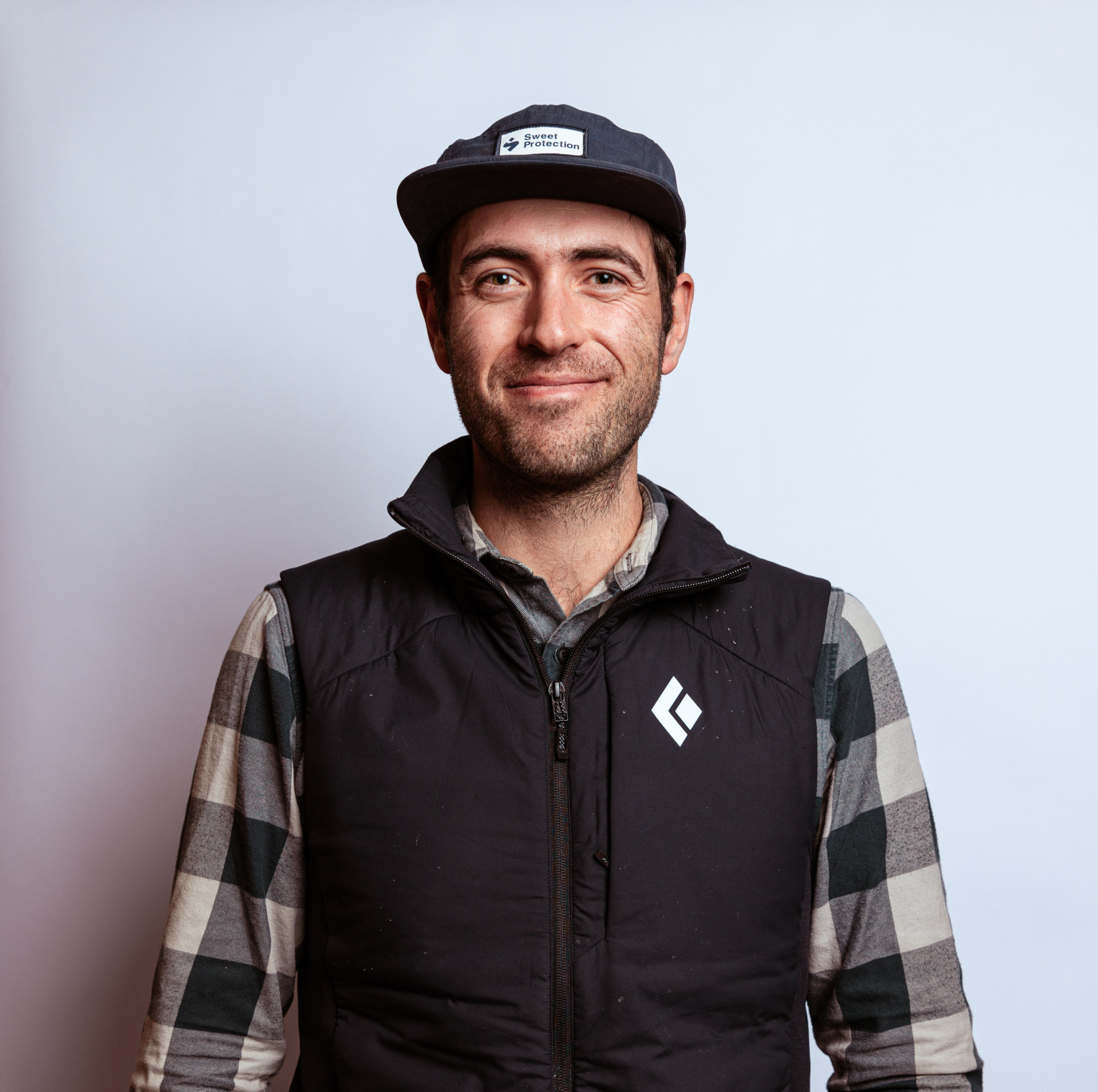
Bergen Tjossem is a ski fanatic, conservation professional, and nature nerd based in Vail, Colorado. His life and career have centered around protecting the natural environment and public lands that raised him, but as Ed Abbey put it, “It is not enough to fight for the land; It is even more important to enjoy it.” So when he’s not working his day job, you’ll find Bergen ski touring before dawn, ice climbing in the dark, running trails until his legs fall off, skiing 13er’s with his friends, or making the world’s best pizza with his wife, Rachel. You can find him on Instagram.

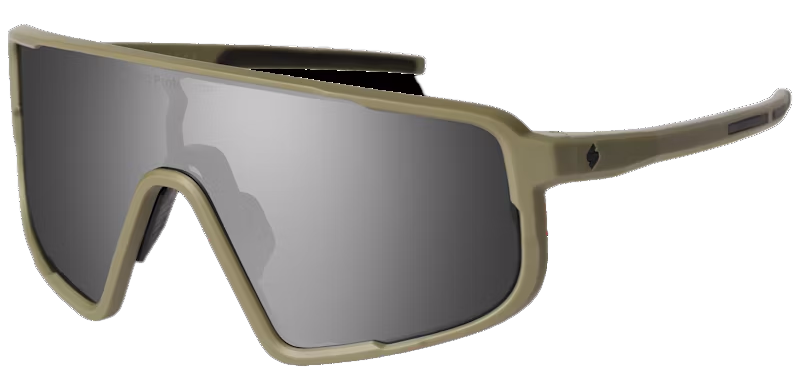
10 comments
Great article and review – thanks! I have the Pursuits with the photochromic lens and have had the same experience in low-light, really noticed it the other day skiing down a heavily forested trail near sunset. Also, I have not had any issues with them fogging or getting the lens scratched with the arms, interesting. I might try the WIldcats or Ultralites next, with a 15% VLT lens, and compare. Your reviews are very well done, comprehensive and very useful. Can’t thank you enough!
I would love to know how Julbo Density stacks up! I love my Julbo Shield but would welcome more airflow and coveragw. Thank you for the great summary!
We definitely have a bunch of Julbo options on the radar for testing this season to add in: Density, Ultimate Cover, Shield. Good and bad thing is there are just so many qualified options these days. Will prioritize Density and let you know…
I got a pair of the Pursuits a month or two ago (fall) and have liked them so far. I haven’t noticed the photochromic lens being too dark in overcast conditions, which we have had a lot of, and with the low sun this time of year that really means low levels of light.
I got them for spring and summer skiing/mountaineering, both for the side and nose shield, and becasue the Attack’s photochromic lens doesn’t go to a full cat 4 glacier tint.
I try a few more times specifically in low light and see what I think.
Hey Slim, that’s interesting that you’ve had a different experience with the photochromatic lens. Mine tend to get super dark in overcast and actively snowy conditions. I took that selfie above in low light conditions and the glasses were fully dark. So I’ve kept them around for bright days that may see a cloud or two rather than try to use them as a “one lens for everything” option. I think Spring/Summer mountaineering is truly where they thrive.
In general I don’t think photochromic lenses work well in cloudy skiing conditions. I’ve had several pairs (smith, sweet protection, julbo) and they all get darker than they should in those conditions. Maybe something to do with the cold temps?? I’ve been reasonably happy with some for summer mountain biking but pretty much given up on them for winter use. Just seem better to have interchangeable lenses including something like a rose lens.
I Think the problem with photochromic lenses in foggy, snowy daays is that there is too much light in the ambient, its all white and it activates the lenses to become darker. It’s a very different situation than start early before the sunrises whe there actual less light.
In fact, a whiteout day is not much less light, just more diffuse, les details as there are no shadows and less visibility, but not much less light. For this contitions just go with a clear , yellow o rosé lenses
Pablo, you are probably right.
I still found my Pursuit photochromic lens to be fine this past weekend when we skied in the trees (mostly deciduous, a few pines) with light snow falling all day.
Maybe it’s just because I like to have some light blocking most of the time, all though indoors, at middle age, I’m Turing up screen brightness and lights all the time.
You guys missed the better Sweet Protection glasses, the Ronin. They are frameless which helps significantly with fogging, not getting snow stuck inside the frame against the lens, and the lenses are interchangeable. The arms do fall off the lenses kid of easily, and the photochromic lens doesn’t have nearly the range that Julbo’s do but these are the best I’ve found.
https://www.sweetprotection.com/us/en/ronin-rig-reflect-rig-quartzmatte-crystal-black/
Hey Justin, great call. I’ll see if I can get my mitts on a pair to test and add to the guide.